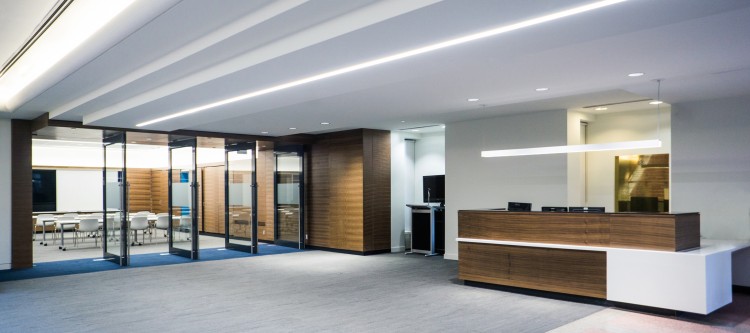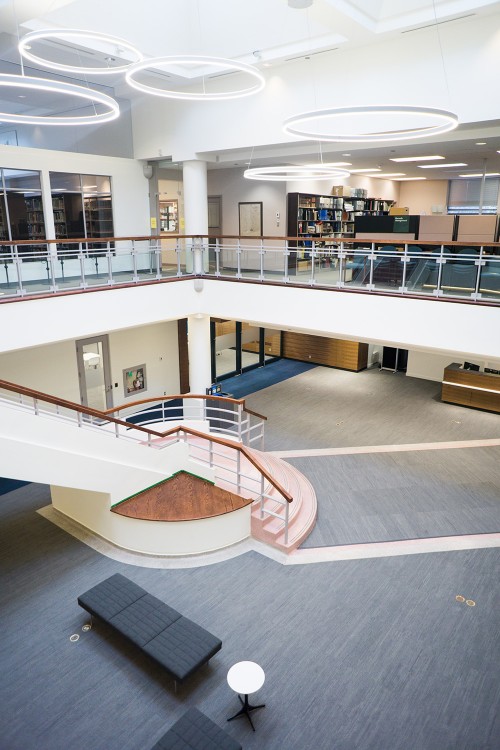Description
The Toronto Archives is the repository for the City of Toronto’s historical records, an important municipal institution housed within an aging building. The objectives of the project were to deliver an improved user experience, increase the Archives’ capacity to accommodate contemporary programming needs, and broaden engagement with the larger community. Gow Hastings worked closely with Archives staff to develop the plans to modernize the atrium space and convert the old theatre into a new multipurpose space named “The Spadina Room” which will be used for public meetings, lectures, receptions, and educational programming.
The project presented an interesting architectural challenge to deliver a contemporary space within the functional and aesthetic constraints of the Archives 1980s building, that would allow the Archives to meet their current needs and continue to grow with the building. We employed strategic design moves to enhance the performance and experiential quality of the spaces while maintaining the architectural integrity of the existing structure.
The entrance to the building was enhanced with modifications to the greeting area and reception desk for a better arrival sequence, easier orientation and wayfinding. The atrium was enlivened with new lighting, carpeting, paint, furnishings, and audiovisual equipment, to be a museum-quality space for temporary exhibitions and large gatherings. Ring-shaped pendant lights act as a soft counterpoint to the atrium’s dramatic vaulted space. Exhibition space dedicated to community displays runs the length of the atrium’s east wall to provide a showcase zone for local groups.
The previously underutilized theatre has been transformed for increased functionality to host events, conferences, classes, and presentations. The Spadina Room, with a capacity for 60 people, will better serve the needs of Archives educators and the hundreds of students who visit for programming each year. When not being used by students, the space is available for booking to city groups and the public.












